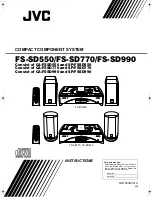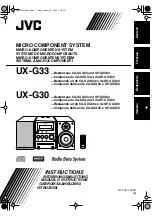
• When Multiple Voice Mails are installed in the network, each site must have a unique Voice Mail
pilot number. The pilot number assigned must be within the routable extension number range in all
sites throughout the network.
• When each site has its own Voice Mail system, a user in one location cannot call the Voice Mail pilot
number that resides in another system.
• When each site has its own Voice Mail system, a Voice Mail Message Line key (Program 15-07 :
key 77) cannot be programmed for an extension in a Remote system.
• Virtual Loopback trunks are not supported across SL Net.
• Code Restriction is not applied for CO trunks accessed across the SL Net network.
• Network ports (extension or trunk) cannot land on a virtual extension key. When Program 15-18 is
set to "land on key" the virtual extension will still ring. When the call is answered the virtual key will
go back to an idle state.
• SMDR information is collected in the system where the trunk resides. If a user in Site A accesses a
CO trunk out of Site B, this call is reported in Site B's SMDR and not in Site A's SMDR.
• When a networked ICM call forwards to Voice Mail (Centralized or Individual Voice Mail) the user
will not be able to perform any dialing options to dial out of the mailbox. The associated dial action
table cannot be accessed unless the call originates from a CO trunk.
• If you use the Make Call feature while listening to a Voice Mail message, the first few seconds of the
call may be silent if the call is routed across the SL Net network.
• When using Loop Keys to make outgoing CO calls via the network, the loop key will not light. If ARS
is enabled, and an outgoing CO call via the network is placed, the loop key will light for the first few
seconds until the system determines which trunk to seize.
• When a CO call via the network is put on hold, the call is placed onto the users Hold key. To retrieve
this call the user must press the Hold key. If one call is already on Hold the user cannot place a
second call on hold, the second call must be placed into a park orbit or transferred to another
station.
• Built-in Automated Attendant and Centralized Voice Mail cannot be used in the same system.
• Calls (Intercom or Trunk) routed across the SL Net network cannot be answered by the Built-In
Automated Attendant.
• Caller ID Flexible Ringing does not work for incoming calls via the SL Net network. For the calls to
route based on caller ID, the programming must be performed in the system that contains the CO
trunks. Routing to other system's extensions is available; however the ringing patterns will not be
followed.
• Directory Dialing will not list extension numbers in remote SL Net systems.
• Distinctive Ringing patterns will only work in the system where the trunk resides.
• A Drop Key (Program 15-07 : key 84) or the Flash Key will not function for calls routed across the
SL Net network.
• Long conversation cutoff will not disconnect a trunk call if a user accesses a trunk out of a
networked system.
• An operator extension (Program 20-17) cannot be assigned to an extension in a Remote SL Net
system. The operator for each site must reside in their own local system.
• Calls routed across the SL Net network cannot use the Repeat Redial function.
• A Reverse Voice Over key (Program 15-07 : key 47) cannot be programmed for an extension in a
Remote SL Net system.
• Room Monitor cannot be used to monitor an extension in a Remote SL Net system.
• A Saved Number Dialed key (Program 15-07 : key 30) cannot be used to save a number if the call is
routed across the SL Net network.
• A Secondary Incoming Extension cannot be programmed for a station in a Remote SL Net system.
• A Secretary Call Buzzer and Secretary Call Pickup key (Program 15-07 : key 41 and key 42) cannot
be programmed for a station in a Remote SL Net system.
• A Serial Call cannot be performed to a station in a Remote SL Net system.
• Tandem Ringing cannot be set to an extension in a Remote SL Net system.
• If an extension is using a CO trunk in a Remote SL Net system, the Tone Override feature is not
supported. In this scenario the busy station will receive the Tone Override but will not be able to
answer the caller.
SL1100
ISSUE 2.0
1-682
SL Net
S
Summary of Contents for SL1100
Page 2: ......
Page 3: ...Features and Specifications Manual A50 031169 003 NA ISSUE 2 0 ...
Page 171: ...5 Press Speaker key to hang up ISSUE 2 0 SL1100 Features and Specifications Manual 1 159 C ...
Page 218: ...2 Dial 724 SL1100 ISSUE 2 0 1 206 Dial Pad Confirmation Tone D ...
Page 741: ... Direct Inward Dialing DID ISSUE 2 0 SL1100 Features and Specifications Manual 1 729 T ...
Page 856: ...MEMO SL1100 ISSUE 2 0 2 26 Codes Tables ...
Page 862: ...MEMO SL1100 ISSUE 2 0 3 6 Features Availability by Software Revision ...
Page 863: ...MEMO ISSUE 2 0 SL1100 Features and Specifications Manual 3 7 ...
Page 864: ...Features and Specifications Manual NEC Corporation ISSUE 2 0 ...
















































